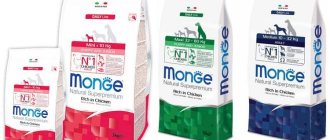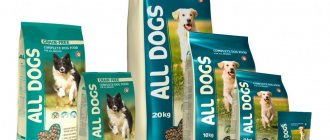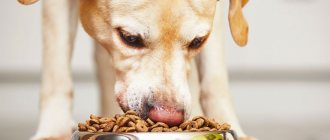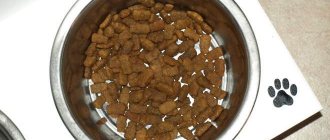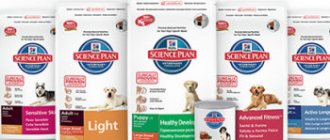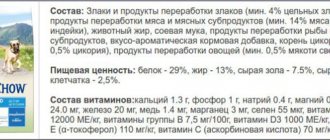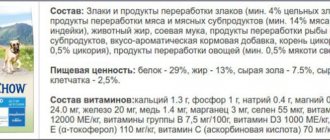There are countless options for diets for your tailed friend: dozens of different types of food are on the shelves of pet stores, and no less recipes can be found on forums on the Internet.
Not an easy choice!
Surely many of you have thought more than once about what diet to choose for your dog. Dog lovers can spend hours discussing the pros and cons of different types of feeding, sharing tips and recipes. And also argue, argue and argue. There are many arguments both in favor of natural dog food and against a diet based on raw ingredients. Of course, all arguments in this regard have a right to exist. However, in the end, everyone decides for themselves what is suitable for feeding their pet.
Naturally, there is no consensus on this matter, but we will try to clarify some details that will help you make the right choice. In this article, we will simply share our experience and tell you what reasons once convinced us to give up dry food, opting for natural raw feeding, and also show what result we came to.
Where do we find inspiration?
Of course in our own dogs! Everything we offer you is the result of our work to improve the quality of life of our three favorite shepherds: White Swiss, Australian and Central Asian. We are constantly improving our diets, expanding our knowledge and, of course, selecting the best ingredients!
Nutrition rules
How does digestion work in dogs? Of course, like a predatory animal. But, in addition to meat and bones, they need vegetables, fruits and herbs. Digestion should begin in the animal’s mouth, but the dog’s teeth can only crush pieces of meat and bones. They are not able to grind other types of food.
The gastrointestinal tract in dogs is short, compared to the gastrointestinal tract of herbivores - complete emptying occurs almost fifteen hours after eating. We can conclude that the stomach microflora for dogs is not as crucial as for herbivores.
But the bacteria that have settled in the cecum deserve a separate word - fermentative ones are especially necessary. It is their lack in the body that forces the animal to eat all sorts of disgusting, in our opinion, objects and creates a deficiency of vitamins in the body.
Conclusion:
- the structure of the dog’s gastrointestinal tract is designed by nature for nutrition, the basis of which (up to 80%) is raw meat;
- the composition of a single serving should be relatively small to prevent overeating and volvulus. Percentage of products: 75 – meat, 25 – cereals, sour milk, vegetables and fruits;
- the dog should be able to chew pieces of food to cleanse the mouth of bacteria, using secreted lysozyme and mechanically;
- bones must be digested by concentrated gastric juice - this indicates its health;
- Almost any meat is suitable for food, even wild animals. The main condition is low fat content;
- nutrition should be regular and balanced, taking into account health, age and physiological state.
Dry dog food
There is a huge variety of manufacturers on the ready-made food market, who vying with each other to offer different types of diets, claiming that their food consists of 100% natural products.
Naturally, most often these are just publicity stunts. Let's figure out what types of feed are on the market.
Dry food is divided into classes: economy, premium and super-premium. Basic rule: you cannot feed your dog economy class dry food. Within a few years of eating this way, your pet will develop irreversible health problems. The funds saved in this way will have to be spent on restoring and maintaining the dog. Economy class food can be used only in the rarest cases: for a short time due to difficulties in purchasing good food. When purchasing a tailed friend, you need to be aware that its maintenance will require investments in food, treatment and other procedures.
Premium and super-premium dry food is recommended by veterinarians and owners. It is better to immediately choose super-premium food. As a rule, premium brands are liked more by pets, but this is often due to the use of aromatic additives, flavor enhancers, and salt.
Premium food contains a higher content of protein, fiber, and natural ingredients that can improve the dog’s digestion, reduce the smell of feces and correct health problems.
For each animal, food will have to be selected strictly individually. It is better to start by buying a small bag and buy it several times. Often dogs stop eating a certain type of food for no apparent reason, so you will have to find another one. Selection tips:
- Avoid choosing dry food with multi-colored granules;
- choose a diet with a granule size that will be convenient for your pet: not too large for the mouth, but not too small. It's better if you have to gnaw them rather than just swallow them. There are specialized foods for certain breeds, made in a convenient form;
- carefully study the composition and breed recommendations on the pack;
- Monitor your body's reactions and stop feeding immediately if they occur.
Remember - dogs need clean, fresh water at all times. A bowl of water should always be in an accessible place. In hot weather, the norm is increased, not forgetting to take the dog outside more often.
Advantages and disadvantages
| pros | Minuses |
|
|
Strengths and weaknesses of dry feeding
Pros of dry food:
- Complete feeds are balanced in all macro- and micronutrients and are ready to eat. This is the main reason why many owners choose this type of nutrition - it allows them to provide the animal with a complete diet without a significant investment of time.
- Any industrial product is tested for quality and safety, so the presence of toxins and pathogenic microbes in it is unlikely.
- The storage requirements for dry food are minimal: a refrigerator is not needed, just a cool room is enough.
- If your dog is prone to being overweight, ready-made food is perfect for him, because it is easily dosed using a measuring cup.
- Dry granules are a shelf-stable product that you can stock up on for future use. In addition, it is suitable for any type of automatic feeder.
Disadvantages of dry food:
- Not all dry food is created equal. If you are accustomed to relying on manufacturers' advertising statements and are not ready to learn to understand the composition of dry food, there is a huge risk of buying a product that will be significantly inferior in composition to high-quality natural food;
- Dogs are not always willing to eat dry food: some refuse it, especially if they are not accustomed to it from an early age.
Natural food
The main argument of defenders of natural food is that animals have been eating meat for centuries and have not known such problems with the health of internal organs, which began to be registered by veterinarians with the emergence of the industry for the production of dry ready-made food.
Natural food will require the owner to spend a long time selecting and drawing up a weekly menu. You should not think that you will be able to save money by increasing the amount of vegetables and cereals per serving and reducing the share of meat. This will only lead to your dog remaining hungry and starting to beg and steal food.
Supporters of natural medicine note that this type is more labor-intensive, but brings more health benefits: a lower percentage of diseases of the genitourinary system, kidneys, pancreatitis, teeth and gastrointestinal tract.
There is an opinion that “a balanced diet” is an advertising slogan that is imposed on the minds of owners by manufacturers of ready-made food. The basic rules for feeding animals:
- typical diet for a dog: basis – meat, necessary fermented milk products for colonizing microflora, fiber;
- moderation - the portion corresponds to the size and needs. Overeating and starvation should not be allowed.
These two points are typical for natural food, unlike dry food.
Naturally, you need to remember that there is a list of prohibited products, which includes:
- smoked, salted products;
- sweets;
- flour products;
- fat meat;
- dairy products.
You need to remember the need to purchase additional complexes of vitamins and minerals, since during the cooking process many of them lose their properties, and not all of them are absorbed in the process of eating food.
Advantages and disadvantages
| pros | Minuses |
|
|
The need for portion control
It can be difficult for adherents of the traditional method of feeding pets to believe that a few handfuls of dry food per day is a full portion of food for the animal, so they often overfeed their pet. This gives rise to a persistent myth that feeding dry food leads to obesity.
But it is enough to realize that dry food is a concentrated product, devoid of moisture, which has no nutritional value, and even a small volume of it is quite high in calories. This is why it is so important to follow the manufacturer’s recommended dosage rates for food (they are always indicated on the packaging) and not to overfeed the animal, as this can lead to the development of obesity in the pet. You can read more about the dosage of dry food here.
Mixed nutrition
Most veterinarians and owners believe that this type is unacceptable. By mixed, many understand options in which dogs receive dry food in the morning feeding, and in the evening a portion of porridge with meat, or the products are mixed directly in one bowl. It is unlikely that any animal will be able to digest such a diet without causing serious problems with the gastrointestinal tract.
Many breeders have developed their own mixed type rules:
- dry food + meat products, fermented milk, vegetables or fruits in one bowl;
- Cereals are not used in such feedings.
Such nutrition will not create a significant burden on the gastrointestinal tract, since a dog needs different doses of acids and types of enzymes to digest dry food and porridge.
There are nurseries that use a mixed type, but with one caveat: dry food is soaked, meat is eaten boiled. If meat is given raw, this should be a separate feeding. For example, evening.
Interesting fact: dry food manufacturers themselves allow a mixed type of feeding - granules + wet canned food.
Advantages and disadvantages
| pros | Minuses |
|
|
Puppy's first feeding
At the age of 1–1.5 months, puppies open their eyes and become interested in adult food. The choice of the puppy's first complementary food depends on the type of feeding.
If the puppy was fed by its mother, it is fed:
- Whole goat or cow's milk.
- Low-fat broth.
- Boiled minced meat mixed with broth.
When bottle-fed, the puppy is fed industrially produced pates or pastes. If the baby is stunted, canned food for malnourished animals is used as the first complementary food.
What to feed a dog, the opinion of veterinarians
There is no clear opinion among veterinary specialists regarding the choice of type of feeding; each of them proceeds from their own experience. Most of them select the patient's menu together with the owner.
Here are some opinions:
Ivan S, veterinarian, 8 years experience
“I suggest my clients start feeding their puppies with dry and wet food, choosing exclusively super-premium classes. From experience, some owners simply forget about the need for additional support of the body with vitamins when feeding natural food, or simply save on it. We often change dry food if problems arise or the pet refuses to eat one or another type. Using a ready-made diet, it is easier to choose a diet for obesity, or choose an option for an allergy sufferer or an older dog. In this option, the owners are more disciplined with their dog - they do not give food from the table.”
Elena K., veterinarian, 12 years experience
“I am a supporter of natural nutrition, with a high content of meat in dog food. Since the advent of dry food, the number of kidney diseases and urolithiasis has seriously increased. Problems with inflammation of the paraanal glands - feces are too soft in consistency. Naturally, natural food is only for owners who are ready for problems with nutrition. If I see that the pet has been switched to full plates of empty porridge with a small amount of vegetables, I recommend dry food.”
Oleg, veterinarian with 6 years of experience
“Even during our studies, we were told that a mixed meal option should not be recommended to owners, since the dog’s gastrointestinal tract simply cannot cope with the constant process of digestion. But with a competent approach, choosing the diet and system together, we came to the conclusion that mixed options are often an excellent solution. The dog will receive everything it needs. It will not burden the gastrointestinal tract and will avoid most of the problems inherent in the same type of feeding.”
Nutrient balance
The most valuable quality of an industrial diet is the content of all the nutrients, macro and micronutrients, necessary for a cat or dog. This way, the owner will not have a headache about whether the pet is getting enough protein or fat, or whether it has enough taurine or vitamin B.
It is almost impossible to achieve such accuracy when preparing a diet at home, because dry food formulas are developed by specialists and are subject to standards regulated by industry organizations. Moreover, these recommendations are not taken out of thin air, but are compiled on the basis of research into the physiological needs of dogs and cats.
Which is cheaper: dry food or natural food?
An important factor when choosing a type for the owner is cost. At first glance, the natural one looks cheaper. After all, the cost of super-premium dry food is quite high, and if the dog needs specialized food, it is even higher.
In natural nutrition, the most expensive product is meat, accounting for 75%. In regular stores, the cost of beef is very high. But don’t forget about another expense item – vitamin and mineral complexes. High-quality and balanced complexes are not cheap.
From the experience of dog breeders, it can be noted that the two types of feeding cost approximately the same amount. Natural wood costs a little more, but not significantly. At the same time it takes much more time.
Prevention of tartar
An important change after switching over and incorporating proper raw bones is cleaning your teeth! In just a couple of months, even in dogs with advanced tartar, this problem goes away. Teeth become white, like after ultrasonic cleaning. Which may and will never be needed again.
Maintenance costs are reduced!
We sincerely believe that by choosing the right natural food for our dogs, we are investing in their health. And this pays off in a noticeable reduction in the number of trips to veterinary clinics and consultations with specialists. After switching our dogs to an all-natural, balanced diet, we stopped thinking about allergies, tartar in dogs, coat and digestive problems, and many other diseases that dogs that eat dry food are susceptible to. We love it!
How to switch your pet to dry food from natural food
Translation rules:
- You can’t do this suddenly at one feeding;
- At first, the granules are soaked in water, not forgetting to remove them after feeding to avoid spoilage;
- before transferring, calculate the volume of the daily portion and replace part of it with narrowed food;
- The daily portion is divided into 7 parts. The first three days give one part + 6 naturals, then every two days they increase the portions by one;
- if the dog does not want to eat dried meat, pieces of boiled meat are added to the portion, but not more than 10%;
- food is bought in small bags in case the dog refuses to eat this type;
- if the dog refuses to switch to drying, you should wait a while until the dog gets hungry;
Before such a transfer, visit a specialist to examine your pet; perhaps he has contraindications to such a food transfer.
How to switch your pet to natural food from dry food
Rules:
- begin the transition to natural food with light foods that do not cause allergies: rice, turkey, beef;
- the transfer should last from 10 to 14 days;
- each new product is introduced every 2 days;
- start with one type of meat - better than turkey;
- after poultry, you can introduce beef;
- vegetables are gradually introduced, and on the 10th day, sour milk, fish and offal;
- It is better to postpone feeding meat until the evening, since it takes a long time to digest;
- with this transfer, one of the dog’s feedings is replaced.
What to feed your pet – dry food or natural food – is the owner’s choice. The main thing is that such feeding is typical and moderate and does not lead to serious health problems. Remember - you can’t skimp on your dog’s food. What do you feed your pet? What menu are you creating? What food do you choose? Share your experience in the comments, please.
Water norm
The dog must have free access to fresh drinking water. The amount of water is determined by the dog’s age, time of year, and level of activity. In summer, dogs drink more water than in winter, but regardless of the time of year, do not limit your dog's drinking water.
Use soft, separated, filtered, bottled water without gas. Change the water in the bowl twice a day.

